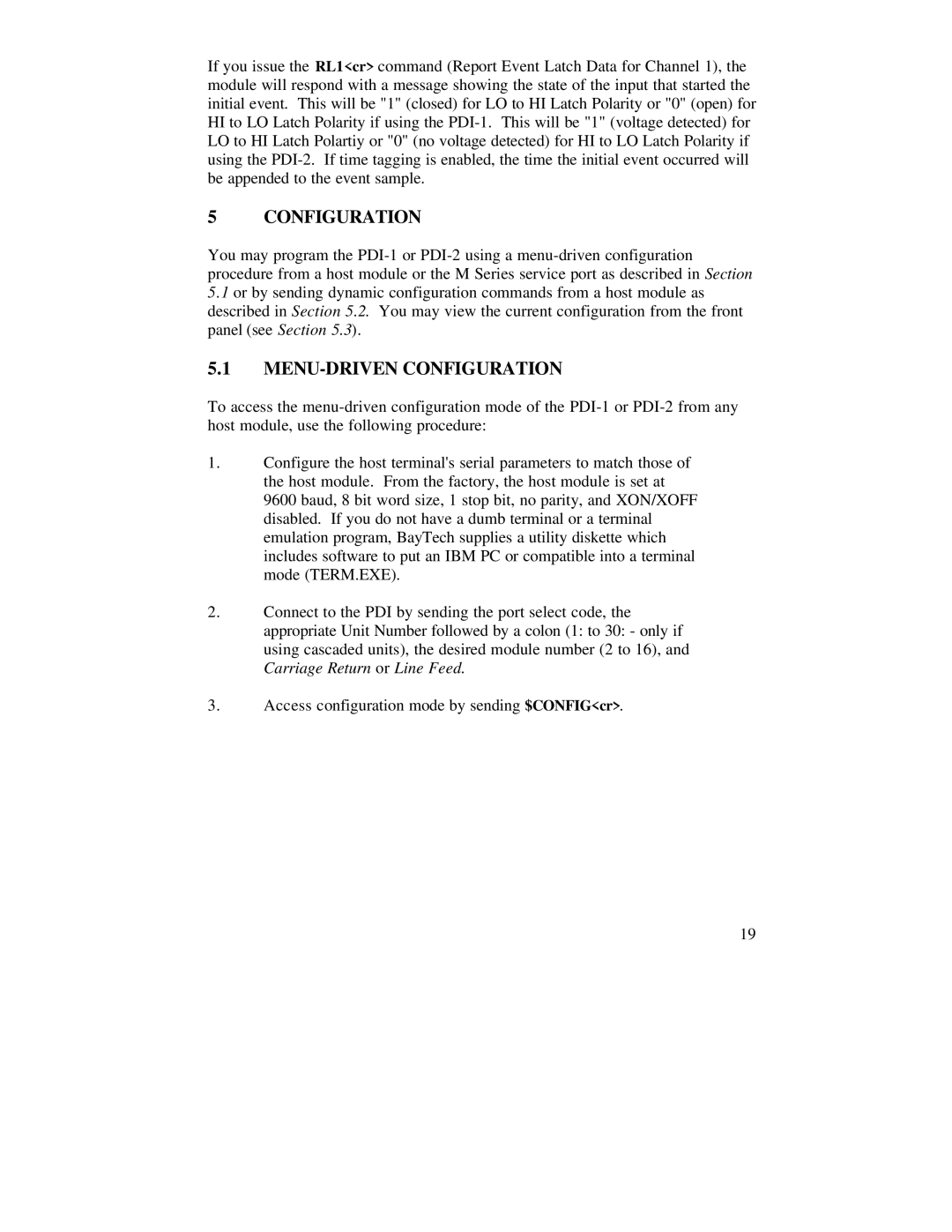If you issue the RL1<cr> command (Report Event Latch Data for Channel 1), the module will respond with a message showing the state of the input that started the initial event. This will be "1" (closed) for LO to HI Latch Polarity or "0" (open) for HI to LO Latch Polarity if using the
5 CONFIGURATION
You may program the
5.1or by sending dynamic configuration commands from a host module as described in Section 5.2. You may view the current configuration from the front panel (see Section 5.3).
5.1MENU-DRIVEN CONFIGURATION
To access the
1.Configure the host terminal's serial parameters to match those of the host module. From the factory, the host module is set at
9600 baud, 8 bit word size, 1 stop bit, no parity, and XON/XOFF disabled. If you do not have a dumb terminal or a terminal emulation program, BayTech supplies a utility diskette which includes software to put an IBM PC or compatible into a terminal mode (TERM.EXE).
2.Connect to the PDI by sending the port select code, the appropriate Unit Number followed by a colon (1: to 30: - only if using cascaded units), the desired module number (2 to 16), and Carriage Return or Line Feed.
3.Access configuration mode by sending $CONFIG<cr>.
19
